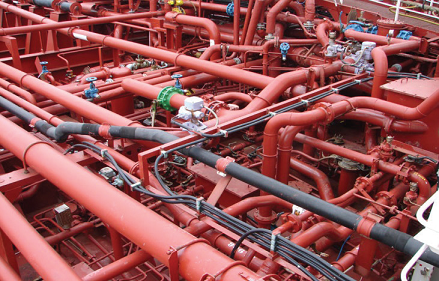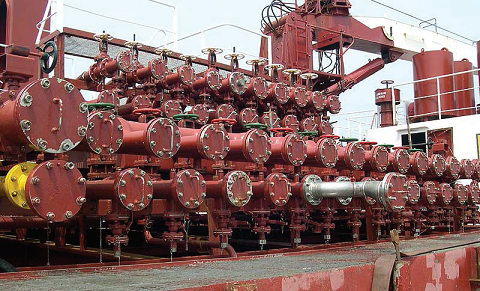Tanker cargo shortage and contamination claims

There are many areas where the transfer of bulk liquid cargoes and the methods used can give rise to either a short out-turn or a cargo contamination. If we consider the cargo loading and discharge cycle, a ship must first be prepared with suitably clean tanks to load the cargo; then a correct loading sequence using the minimal number of lines and valves and each grade properly segregated from non-compatible grades; then transported at the correct temperature and carriage requirements; then discharged ashore in the correct sequence to the correct shore tank.
Therefore, it is of vital importance during custody transfer of liquid bulk cargoes that there is an accurate cargo measurement procedure to prevent potential cargo shortage claims and good sampling practices to prevent potential cargo contamination claims, as well as understanding the cargo characteristics with respect to previously loaded cargoes, tank preparation required and tank coating compatibility.
Cargo shortage claims
A cargo shortage out-turn claim, where the quantity discharged is less than the ‘Bill of Lading’ (B/L) loaded quantity, can arise from either a ‘physical’ loss or ‘paper’ loss. A ‘physical’ loss may be the result of evaporation loss during the voyage (high heat cargo or poor pressure vacuum valves), leakage into other tanks, pollution, poor pumping and discharge performance i.e. ‘Remains On Board’ (ROB), measurement errors onboard and ashore, incorrect pipeline settings onboard and ashore and also theft when loading into trucks or cargo diverted to ship’s fuel tanks.
A ‘paper’ loss may occur as a result of the overstatement of the quantity loaded (inaccurate B/L), understatement of the quantity received in shore tanks, calculation and measurement errors in producing the B/L and errors in measuring the shore tank(s).
If we consider ‘physical’ loss, it is important to accurately measure and record the cargo figures at all stages of the cargo cycle to determine where the loss may have happened. Normally, it is done four times during custody transfer between the loading port and discharging port:
- Before Loading – all pipelines and valves should be set correctly and verified by another crew member, the On Board Quantity (OBQ) carefully measured taking into consideration trim and heel, tanks verified ready for loading by the shore representative and a ‘Tank Clean Ready for loading certificate issued’, cargo gauging and monitoring equipment operational, cargo quantity and tank loading plan and sequence checked.
- After loading – determine the loaded quantity, better known as the ‘Ship’s loaded figure’, by an accurate measurement of ullage, temperature, water dips using calibrated equipment and the correct ASTM/API/ Institute of Petroleum Measurement tables for temperature and density. During the voyage monitor cargo temperatures, any heating system and pressure vacuum system.
- Before discharge determine the ‘Ship’s Arrival figure’ by accurate and careful cargo measurement, in particular by checking the temperature at the top, middle and bottom when carrying a heated cargo, checking for any free water and then this should be compared with the ‘Ship’s Loaded figure’ to determine any voyage loss. Any discrepancy should be investigated before commencement of discharge and notified to Owners and the Club. Pumping rates should be agreed and monitored to ensure effective stripping of all tanks.
- After discharge – all tanks, lines and pumps should be carefully stripped of all cargo and then the tanks measured for any ROB quantity. A ‘Tank Dry Certificate’ should be issued to confirm all cargo has been discharged ashore and any ROB noted. Check also if shore lines were full or empty before and after cargo operations. A large quantity of oil can be lost within shore pipelines especially when there are multiple tanks and berths.
Cargo contamination
Cargo contamination could be of either ship or shore origin. To minimise this shipboard risk, it is important that the ship ensures all pipelines, valves, pumps and tanks have been properly cleaned and drained ready to load the next cargo. The manifolds are clearly labelled and the minimum amounts of ship’s pipelines are used onboard with the appropriate two valve segregation to non-compatible grades. The pipelines and valves onboard should be regularly inspected and tested annually to the maximum operating pressures.

Shoreside contamination may occur due to a number of factors such as incorrect hose/Chicksan connection and manifold line ups, wrong grade/shore tanks used, different grade cargo remains in the shore lines, incorrect shore pipeline line setups, shore tank cleanliness, line plugs where a shore pipeline is filled with a different grade and used to push the existing cargo onboard, valve failure or incorrect segregation.

The contaminant may be water, another grade of cargo, a chemical additive, solid matter etc. The contaminant and the origin may be different, however the results are the same – a loss of value and/or rejection of the cargo.
Cargo Measurement and Sampling Equipment

Ullaging, the measurement of the space above the liquid level from the tank gauge reference point, is achieved using fixed float gauge or radar systems and/or a calibrated portable tape gauging systems such as UTI /MMC tapes which can measure the ullage, temperature, and any water/ oil interface.These tapes should be checked frequently and calibrated each year. The UTI/MMC are secured and operated through specialised vapour lock valves which can also be used with similar closed sampling devices.
Cargo quality Issues – best cargo sampling practises
In order to protect the ship against contamination or off-spec cargo claims, the ship must ensure it takes initial samples at the manifold as soon as loading starts and during loading whenever there is a known change to the shore tank in use. No initial manifold samples should be emptied, nor any sample bottle flushed or emptied if the contents appear to be anything other than the expected cargo. Several samples should be drawn and these should all be kept in a secure location onboard in accordance with the company procedure for retention of samples should there be any issues on cargo quality at a later date. In addition, if foot samples are required, i.e. cargo samples are often drawn from the cargo tank by an independent cargo surveyor after an agreed quantity of cargo has been loaded, usually to check that loading lines and the tank have been cleaned and fit to carry the cargo, these are sent ashore for testing and no further cargo is loaded until the foot samples have passed. It is important that clean sterile sample bottles are used and marked with the date, time and location when/where it was drawn. When using a sampling device, this must be clean and checked to be free from any traces of previous cargo. After loading, several sets of samples are drawn from each tank by the independent surveyor, and this operation must be witnessed by a crew member and the samples sealed, properly labelled and carefully stored. Above all, the ship should establish clear and concise cargo operating procedures for tank preparation, loading and discharge and record all operations in a Cargo log book.